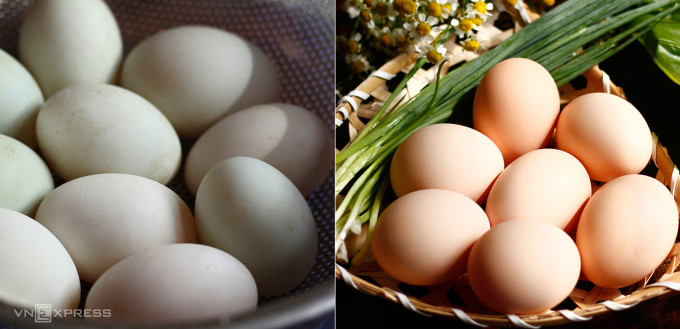Duck egg shells have more tiny holes on the surface than chicken eggs, allowing the salt water solution to penetrate easily and the yolk to "cook" faster.

Principles of salted egg creation from a culinary science perspective
In the book "Salty, Fat, Sour, Hot", author Alice Waters, a famous American chef and culinary teacher, said that the distribution of salt in food can be explained by the process of osmosis and diffusion. These two chemical cycles are driven by nature's tendency to seek equilibrium or uniform solute concentration.
In food, the movement of water across a membrane from the saltier side to the less salty side is called osmosis. The reverse diffusion is slow, in which salt moves from the saltier to the less salty environment until it is evenly distributed throughout.
When salting eggs, NaCl (salt) will penetrate the egg shell into the inside and push water out. This cycle continues until it reaches a state of equilibrium. At this point, NaCl has both antiseptic properties, inhibiting the growth of bacteria to keep the salted eggs safe, and helps the protein in the egg coagulate and precipitate. Therefore, the yolk will solidify instead of being watery.
According to many studies, eggshells are made of calcium carbonate and contain tiny holes that allow oxygen, carbon dioxide, and moisture to escape. Duck egg shells have more tiny holes on the surface than chicken eggs, so the salt water solution can penetrate more easily and the yolk "cooks" faster.
Normally, the average size of a duck egg is 30% larger than a chicken egg. If salted, chicken eggs will easily lose water, causing the already small yolk to become smaller, even shriveled. Therefore, the appearance and aesthetics are no longer attractive.
Furthermore, a chicken egg contains 11.6 grams of fat and 55 mg of calcium, while a duck egg contains 14.2 grams of fat and 71 mg of calcium according to the Vietnamese nutritional composition table. In addition, duck eggs contain more Omega-3 than chicken eggs. Because of the high fat content, when salted, the appearance of the salted duck egg yolk is shiny, smooth, moist and looks more delicious than salted chicken eggs.
How to make salted eggs
Choose duck eggs that are even in size, and shake gently without making any sound, they are fresh and delicious. Wash the eggs, put them in a basket with a gap or dry them in a fan. Rinse or soak the eggs in white wine until the entire surface of the shell is covered. Then, put the eggs in a basket to dry. This is to ensure that the egg shells are clean and not damaged when soaked.

Boil 1 liter of water and 500 gr of salt (used to soak 10 eggs), add a little cinnamon and star anise for aroma. Let the mixture cool completely.
Place the eggs in a ceramic or glass jar, pour in salt water and cinnamon until the eggs are covered. Put the remaining water in a plastic bag, tie it tightly and press it on the eggs (if you don't have a press) to press the eggs under the salt water. Keep the jar of salted eggs in a cool, stable place during the salting process.
Salted eggs are ripe after 14 days. Crack the egg and take the orange yolk, rinse with water to remove the sticky egg white. Coat the egg with white wine to remove the fishy smell. Brush with sesame oil to make the egg fragrant and shiny when grilled.
Bake the eggs at 170 degrees for 6-8 minutes. If you make a lot, put them in a sealed container and store them in the freezer for later use. Salted eggs are delicious as fillings for moon cakes, cream cakes, sauces, or eaten with porridge.
TB (according to VnExpress)